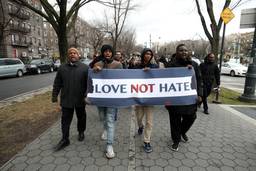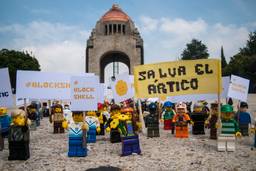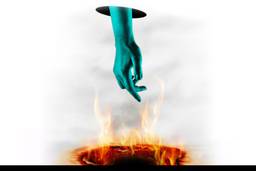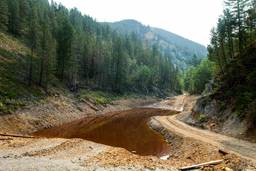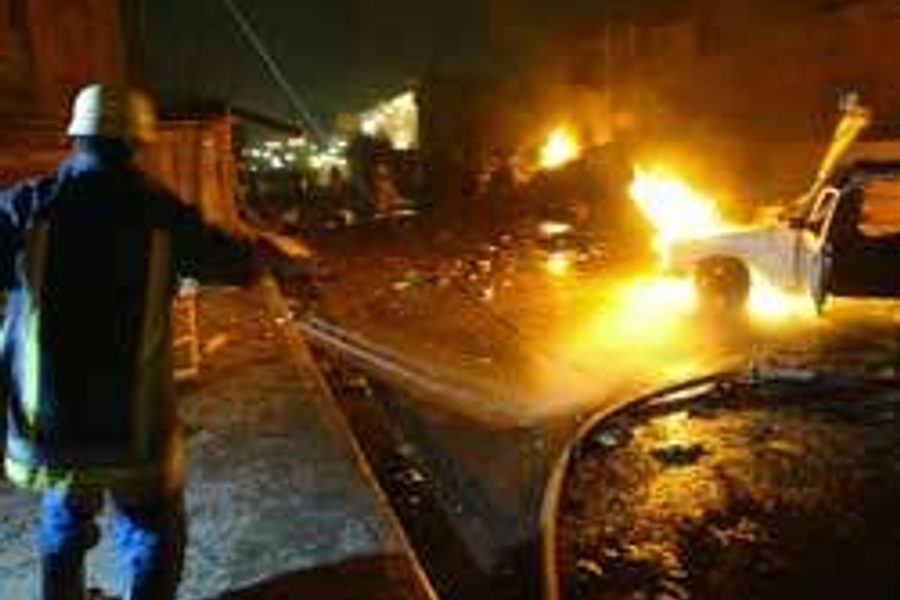
Baghdad—I heard the sound of freedom in Baghdad’s Firdos Square, the famous plaza where the statue of Saddam Hussein was toppled one year ago. It sounds like machine gun fire.
On April 4, Iraqi soldiers, trained and controlled by Coalition forces, opened fire on demonstrators here, forcing the emergency evacuation of the nearby Sheraton and Palestine hotels. As demonstrators returned to their homes in the poor neighborhood of Sadr City, the U.S. army followed with tanks, helicopters and planes, firing at random on homes, stores, streets, even ambulances. According to local hospitals, 47 people were killed and many more injured. In Najaf, the day also was bloody: 20 demonstrators dead, more than 150 injured.
In Sadr City, funeral marches passed by U.S. military tanks and the hospitals were overflowing with the injured: Ali Hussein, a 16-year-old with a bullet in his spine fired from a helicopter; Gailan Ibrahim, a 29-year-old who was shot in the back by a U.S. plane; Ali Faris, a 14-year-old whose bladder was removed after a U.S. bullet sliced through the door of his family home. “The same thing happened to two other children in the neighborhood,” his grandfather told me.
Outside, kids danced on a burned out American Humvee and shouted the lesson that they had learned the night before: “George Bush is Saddam Hussein. George Bush is terrorist!” By afternoon, clashes had resumed.
Make no mistake: this is not the “civil war” that Washington has been predicting will break out among Sunnis, Shiites and Kurds. Rather, it is a war provoked by the U.S. occupation authority and waged by its forces against the growing number of Shiites who support Moqtada al-Sadr.
Al-Sadr is the younger, more radical rival of the Grand Ayatollah Ali al-Sistani, portrayed by his adoring supporters as a kind of cross between Ayatollah Khomeini and Che Guevara. He blames the United States for attacks on civilians, compares U.S. occupation chief Paul Bremer to Saddam Hussein, aligns himself with Hamas and Hezbollah, and has called for a jihad against the controversial interim constitution. His Iraq might look a lot like Iran.
And it’s a message with a market. With al-Sistani concentrating on lobbying the United Nations rather than on confronting the U.S.-led occupation in the streets, many Shiites are growing restless and are turning to the more militant tactics preached by al-Sadr. Some have joined the Mahadi, Moqtada’s black-clad army that claims hundreds of thousands of members.
At first, Bremer responded to al-Sadr’s growing strength by ignoring him; now he is attempting to provoke him into all-out battle. The trouble began when Bremer closed down al-Sadr’s newspaper last week, sparking a wave of peaceful demonstrations. On Saturday, Bremer further raised the stakes by sending coalition forces to surround al-Sadr’s house near Najaf and arrest his communications officer.
Predictably, the arrest sparked immediate demonstrations in Baghdad, which the Iraqi army responded to by opening fire and allegedly killing three people. It was these deaths that provoked the bloody demonstrations.
At the end of the day, al-Sadr issued a statement calling on his supporters to stop staging demonstrations “because your enemy prefers terrorism and detests that way of expressing opinion” and instead urged them to employ unnamed “other ways” to resist the occupation, a statement many have interpreted as a call to arms.
On the surface, this chain of events is mystifying. With the so-called Sunni triangle in flames after the gruesome Faluja attacks, why is Bremer pushing the comparatively calm Shiite south into battle?
Here’s one possible answer: Washington has given up on its plans to hand over power to an interim Iraqi government on June 30, and it is now creating the chaos it needs to declare the handover impossible. A continued occupation will be bad news for George Bush on the campaign trail, but not as bad as if the handover happens and the country erupts, an increasingly likely scenario given the widespread rejection of the legitimacy of the interim constitution and the U.S.-appointed Governing Council.
It’s a plan that might make sense at meetings in Washington, but here in Baghdad it looks like pure madness. By sending the new Iraqi army to fire on the people they are supposed to be protecting, Bremer has destroyed what slim hope they had of gaining credibility with an already highly mistrustful population. Before storming unarmed demonstrators, the soldiers could be seen pulling on ski masks, so they wouldn’t be recognized in their neighborhoods later.
And the Coalition Provisional Authority, which has just hired a London advertising firm to persuade Iraqis that it is committed to democracy, is increasingly being compared on the streets to Saddam Hussein, who also didn’t much like peaceful demonstrations or critical newspapers.
In an interview on April 5, Iraq’s Minister of Communication, Haider Al-Abadi, blasted the act that started the current wave of violence: the closing of al-Sadr’s newspaper, Al-Hawzah. “It was completely wrong,” he said. “Is this how we are going to run the country in the future, sending soldiers to shut down newspapers?”
Al-Ababi, who is supposedly in charge of media in Iraq, says he was not even informed of the plan to close Al-Hawza until the locks were on the door, adding that Sadr’s newspaper did nothing more than speculate that the United States is behind some of the terrorist attacks here. “But these are rumors in the whole country, I’m hearing them everywhere.”
Meanwhile, the man at the center of it all — Moqtada al-Sadr is having his hero status amplified by the hour.
All of these explosive forces came together when thousands of demonstrators filled Firdos Square. On one side of the plaza, a couple of kids climbed to the top of a building and took a knife to a billboard advertising Iraq’s new army. On the other side, U.S. forces pointed tanks at the crowd while a loudspeaker told them that “demonstrations are an important part of democracy but blocking traffic will not be permitted.”
At the front of the square was the new statue that the Americans put in place of the toppled one of Saddam Hussein. The faceless figures of the new statue are supposed to represent the liberation of the Iraqi people. Today they are plastered with photographs of Moqtada al-Sadr.

I hope you found this article important. Before you leave, I want to ask you to consider supporting our work with a donation. In These Times needs readers like you to help sustain our mission. We don’t depend on—or want—corporate advertising or deep-pocketed billionaires to fund our journalism. We’re supported by you, the reader, so we can focus on covering the issues that matter most to the progressive movement without fear or compromise.
Our work isn’t hidden behind a paywall because of people like you who support our journalism. We want to keep it that way. If you value the work we do and the movements we cover, please consider donating to In These Times.
Naomi Klein is a former columnist for In These Times. She is the author of No Logo: Taking Aim at the Brand Bullies, Fences and Windows: Dispatches from the Front Lines of the Globalization Debate and The Shock Doctrine: The Rise of Disaster Capitalism.


